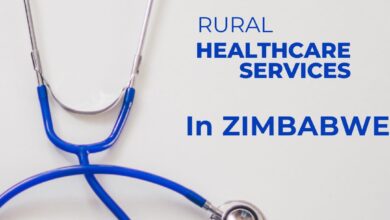Transforming Healthcare with Data Analytics in Zimbabwe

Healthcare data analytics in Zimbabwe is not as prevalent as it should be. Also, it will revolutionise medical services in the country. It offers innovative solutions to longstanding challenges. By leveraging advanced data analytics, healthcare providers can improve patient outcomes, optimise resource allocation and enhance overall efficiency. This transformative approach can reshape the healthcare landscape, paving the way for a healthier nation.
Application of Healthcare Data Analytics in Zimbabwe
The application of healthcare data analytics in Zimbabwe can be vast and impactful. One of the most significant uses is in predictive analytics, which enables healthcare providers to anticipate disease outbreaks and allocate resources accordingly. By analysing historical data and current trends, predictive models can identify high-risk areas and populations, ensuring timely interventions.
Another critical application is in personalised medicine. Healthcare data analytics allows practitioners to tailor treatments based on individual patient profiles, including genetic information and medical history. This approach not only improves treatment efficacy but also reduces the risk of adverse reactions.
Resource allocation is another area where healthcare data analytics in Zimbabwe can make a difference. By analysing patient flow, hospital capacity and resource utilisation, healthcare facilities can optimise their operations. This ensures that resources are directed where they are needed most, reducing waste and improving service delivery.
Improving Healthcare Outcomes
The impact of healthcare data analytics on patient outcomes is imperative. Early detection of chronic diseases, facilitated by data-driven insights, allows for timely interventions that can save lives. For instance, predictive analytics can identify patients at risk of developing conditions such as diabetes or hypertension, enabling preventive measures.
Moreover, healthcare data analytics enhance diagnostic accuracy. By integrating data from various sources, including electronic health records and medical imaging, practitioners can make more informed decisions. This reduces the likelihood of misdiagnoses and ensures that patients receive the appropriate care.
The use of healthcare data analytics in Zimbabwe will also promote equitable access to medical services. By identifying underserved areas and populations, healthcare providers can prioritise interventions, ensuring that no one is left behind.
Optimising Resource Allocation
Efficient resource allocation is crucial for the sustainability of Zimbabwe’s healthcare system. Healthcare data analytics plays a pivotal role in this regard, enabling providers to make data-driven decisions. For example, by analysing patient admission patterns, hospitals can predict peak periods and allocate staff accordingly.
Additionally, healthcare data analytics helps in inventory management. By tracking the usage of medical supplies, facilities can avoid shortages and reduce wastage. This not only saves costs but also ensures that patients have access to essential medications and equipment.
The integration of healthcare data analytics in Zimbabwe’s healthcare system will also facilitate better financial planning. By analysing expenditure patterns, healthcare administrators can identify areas for cost reduction without compromising service quality.
The Future of Healthcare in Zimbabwe
Adopting healthcare data analytics in Zimbabwe will transform the sector, making it more efficient, equitable and patient-cantered. As technology continues to advance, the potential for data analytics to drive innovation in healthcare is limitless.
One promising area is the use of artificial intelligence in healthcare data analytics. AI-powered tools can analyse vast amounts of data quickly and accurately, providing insights that were previously unattainable. This can further enhance diagnostic accuracy, treatment planning and resource allocation.
Another area of growth is the integration of wearable devices and mobile health applications. These technologies generate real-time data that can be analysed to monitor patient health and predict potential issues. This proactive approach to healthcare can significantly improve outcomes and reduce costs.
Conclusion
Embracing healthcare data analytics in Zimbabwe is more than just a technological advancement; it is a catalyst for change. By improving patient outcomes, optimising resource allocation and driving innovation, data analytics will transform the healthcare sector. As Zimbabwe continues to embrace this approach, the future of healthcare looks brighter than ever.





